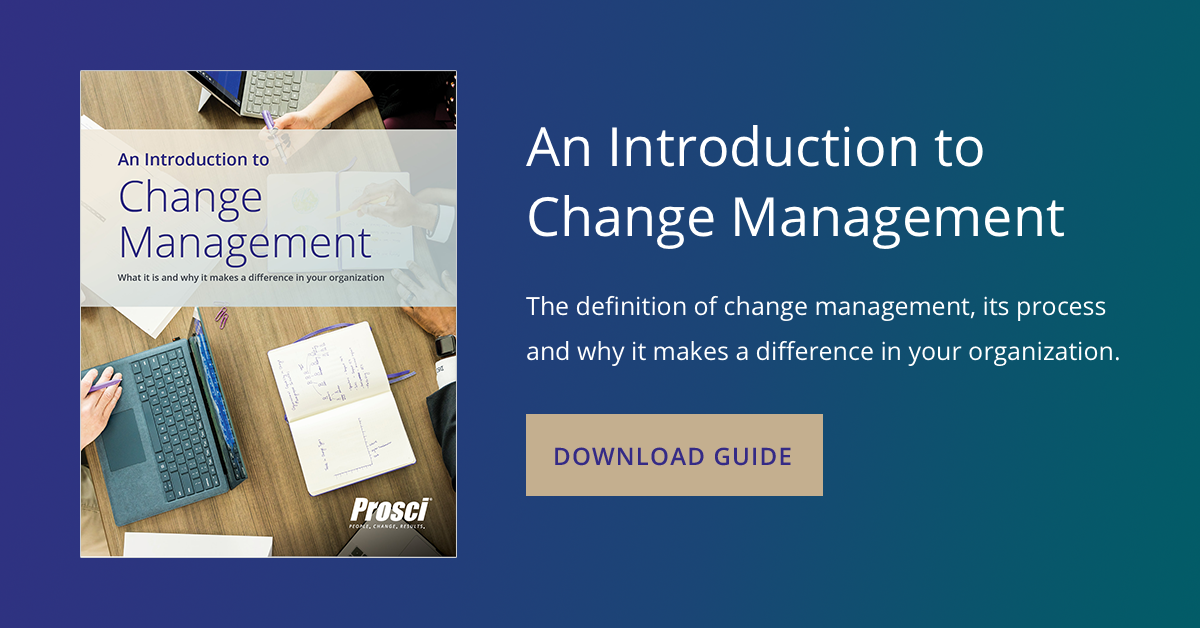How to Provide Context for Change Management

2 Mins
Updated: November 18, 2025
Published: September 6, 2015

Many practitioners are faced with the challenge of building commitment and support for change management with their senior leaders and project teams. To gain the buy-in for change management that you need, you must present change management in the right context.
"Priority is a function of context."
The quote above is from Stephen R. Covey, author of The Seven Habits of Highly Effective People. What we can take from the quote is that the notion of "priority" by itself is fairly meaningless, unless we have meaningful context to understand and evaluate that priority.
In the change management discussion, the question to you then is this: If you are trying to get priority for change management, are you providing the right context for the conversation to be meaningful to your audience?
Or, conversely, what is the context you are providing for change management?
This tutorial presents the "wrong" and the "right" context for change management when you are working to engage project teams and senior leaders in the principles and application of change management.
The "wrong" context
Change management is about the people side of change. So, it is easy to be drawn to "people" issues when providing context for change management. Here are a few of the words that might be associated with "people" issues related to change:
- Engagement
- Morale
- Resistance
- Fatigue
- Stress
- Communication
- Training
While these are all important concepts in the change management world, none convey the importance of change management in a context that will really be meaningful to the project teams you are supporting and the executives you need to engage.
The "right" context
Think about the list above in relation to the following list:
- Return on Investment (ROI)
- Benefit realization
- Results
- Outcomes
- Organizational value
This list provides the necessary context for senior leaders and project leaders - because it is what they care about and, in the end, what they are evaluated against.
So, if we are to engage these groups and gain their support for change management, it is our job to present change management within the context of what they care about and what a project is ultimately trying to achieve. The level of priority we can expect will be much different depending on the context we provide for change management.
Think about the following two statements as an example:
- We need change management on Project X to address resistance and improve morale.
- We need change management on Project X to ensure benefit realization and improve ROI.
While both are true, the second appeals to the concerns of project leaders and executives and will result in greater commitment and higher priority than the first.
When change management "is something we do to address resistance" we do not have the priority that will keep change management at the table and at the forefront of the project work. We are much more likely to become the last on the agenda and the first off the agenda. But, when you have presented change management as "necessary to capture a certain portion of our expected project benefits" the priority, focus and commitment improve. This is the power of context in creating priority.
Closing the loop for the "right" context
The final piece of the puzzle for providing great context for change management is making the connection between the people side of change and the results and outcomes of the project. Here, the notion of "adoption and usage" is critical. To illustrate the importance of adoption and usage, consider the implementation of a perfectly designed process or new technology. If employees do not adopt and use these solutions, then the solution will neither produce improvement in performance nor add value to the organization no matter how perfectly designed they are. The adoption and usage of a new solution by employees is directly tied to project outcomes. If we can show, or help a project team to identify themselves, that some portion of project benefits depend on adoption and usage, we have closed the loop. By connecting these three components - change management, adoption and usage, results and outcomes - we have provided the crucial context that can drive change management commitment and prioritization.



